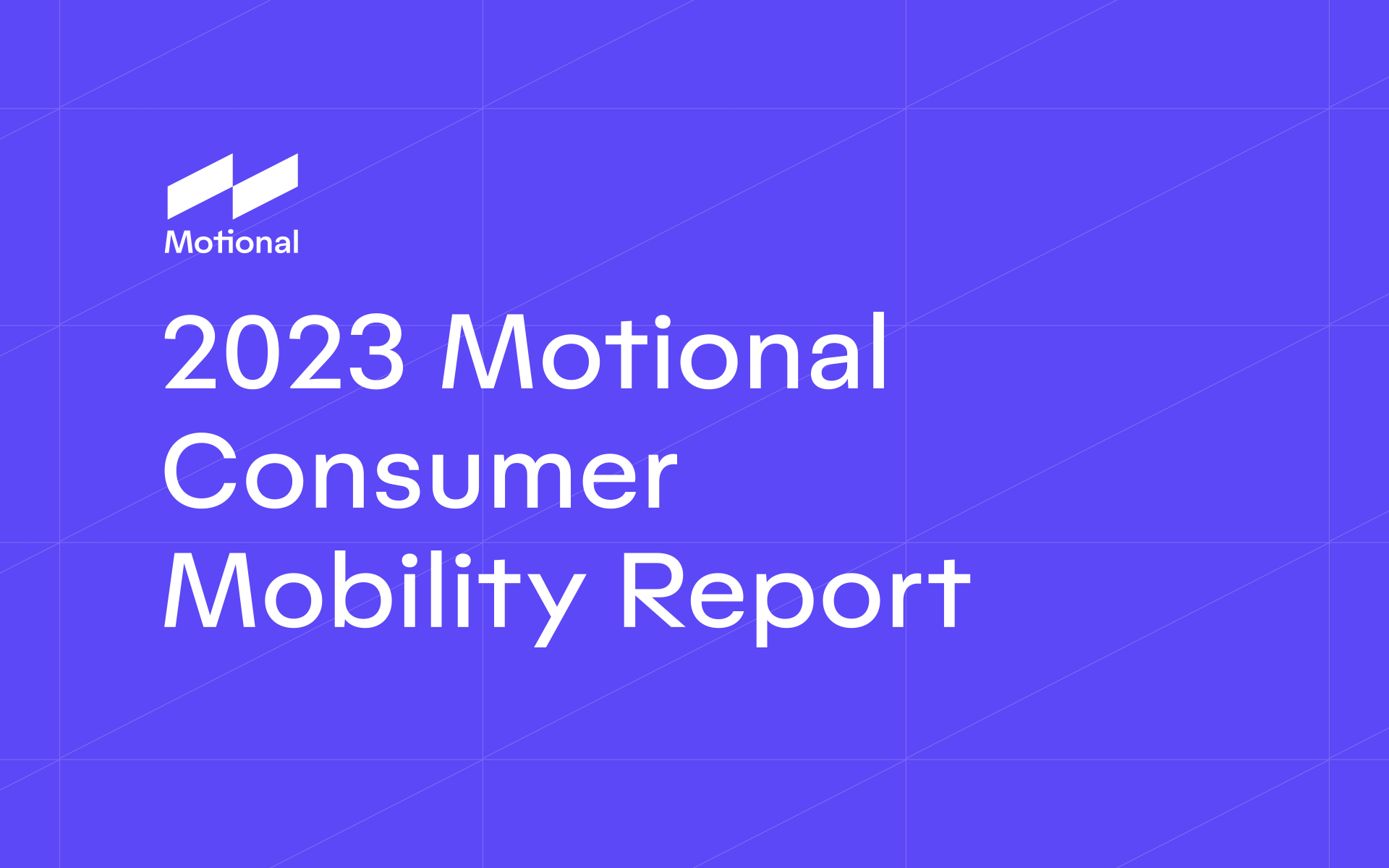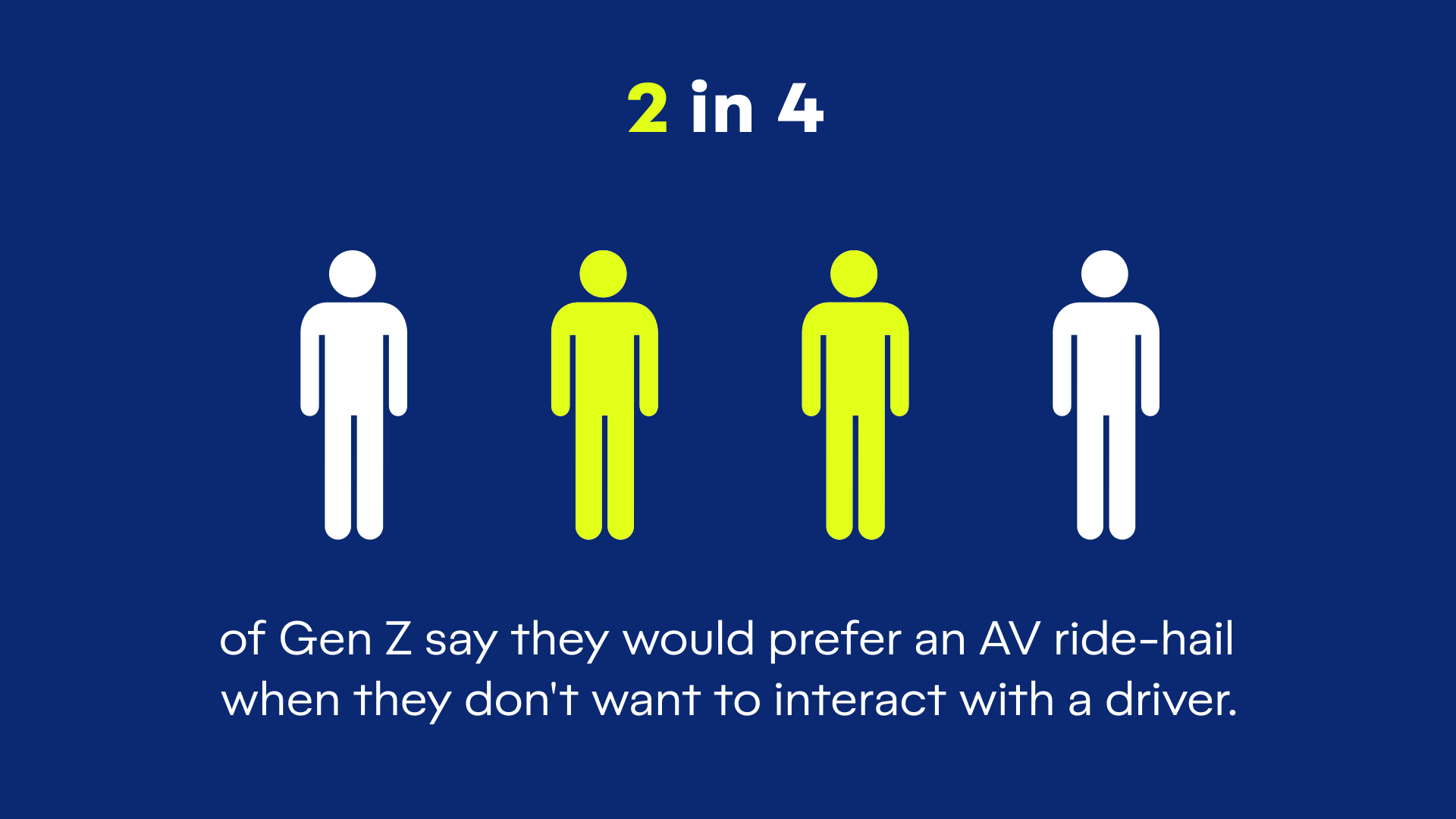At Motional, you, the passenger, are at the core of everything we do. To bring self-driving vehicles out of the future and into daily life, we need to understand what encourages adoption — and equally, what inhibits it.
The real consumer feedback from the 100,000+ rides we’ve given in Las Vegas has proven invaluable. But, there’s more to learn — and this set us off to create the Motional Consumer Mobility Report. We surveyed over 1,000 Americans to understand what excites so many about a driverless future, what gives them pause, and how 2020 has changed the way we think about transportation.
Here’s what we learned.
Education Accelerates Enthusiasm
The survey revealed that the majority of Americans look forward to a future where driverless vehicles are the norm. In fact, 62% of respondents agree that self-driving vehicles are the way of the future, and one in four Americans are excited to ride in one once they’re broadly available.
The more knowledgeable consumers are about the technology, the more eager they are to experience a driverless ride. According to our research, those who identify as “extremely knowledgeable” about the technology are seven times more likely to be excited to ride in a driverless vehicle than those identify as “not very knowledgeable”.
If we want consumers to embrace a self-driving future, we must educate them on how advanced driverless technology is today, and where it’s headed tomorrow.
Safety Will Help Us Earn Your Trust
Sixty-five percent of Americans agree that safety is the most important factor when considering self-driving vehicles. We know that perception of driverless vehicle safety is two-pronged: the technology must be proven safe, and riders must feel safe.
We’ve prioritized safety since our earliest days. We helped develop the Safety First for Automated Driving whitepaper, which establishes an industry framework for the creation, testing, and validation of safe self-driving vehicles.
We also created a culture of data sharing in the driverless industry with our publicly-available nuScenes dataset. This data helps vehicles understand how to safely engage with their ever-changing surroundings, and it spurred the industry to create 10+ similar datasets.
The driverless future — and the societal benefits it will unlock — rest on our ability to drive consumer interest and demand. We have the opportunity to save millions of lives by making our roads safer, and the first step is building trust in the technology.
Mobility, Redefined
The pandemic has given new meaning to the word safety.
Seventy percent of Americans said risk of infection is a concern impacting their transportation decisions, while nearly one in five consumers are more interested in self-driving vehicles now than they were before the pandemic.
As consumers seek socially-distanced ways to move through their lives, our industry is more relevant than ever. This is the moment to show how safely and comfortably driverless technology can fit into everyday life.
The Road Ahead
It’s an exciting time to move driverless technology forward. As we continue to elevate consumer education, we’ll see a rise in adoption. Trust and familiarity are key to cultivating an audience of consumers who embrace a driverless future.
After all, you, the consumer, have a choice. What will move you?
To take a peek into the mind of the American consumer and discover their reactions to driverless vehicle technology, read our Consumer Mobility Report here.

